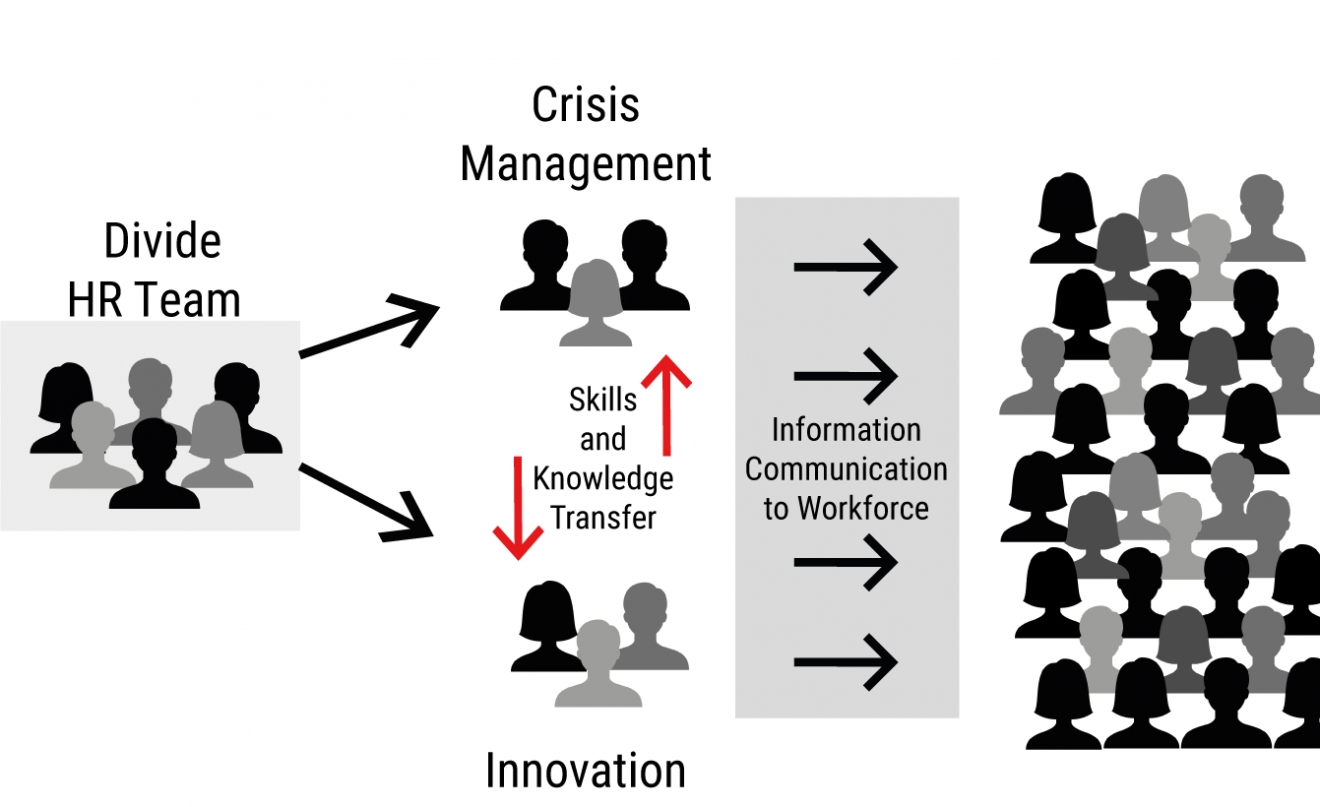We are going through a significant time of rapid changes to long-established ways of working, which brings an incredible opportunity to think about how the future may look.
Agile has expanded from its home in software development and now is an important opportunity for HR to embrace an agile approach to help manage these new challenges. The mental shift that Agile HR adoption brings is about putting people at the centre of everything you are doing to create engaged and productive organisations.
What does it mean in practice?
A good starting point is to look at the Agile HR Manifesto, which highlights the mental shift required to work in a more agile way. As the manifesto states, while there is value in the items on the right, we value the items on the left more.
| Collaborative networks | Over hierarchical structures |
| Transparency | Over secrecy |
| Adaptability | Over prescriptiveness |
| Inspiration and engagement | Over management and retention |
| Intrinsic motivation | Over extrinsic rewards |
| Ambition | Over obligation |
Today we are exploring examples of Collaborative Networks, which could help HR to be flexible and adapt according to priorities, work together across the organisation, rather than in functional silos. However, if you want to explore all the valued items cohesively on the left, you can download r10’s Agile HR: Putting People First paper.
What are some examples of Collaborative Networks?
Teams should be divided into two areas of focus. One to manage the crisis and the second focusing on innovation, i.e. the opportunities to do things differently. Build your teams that have the right mix of skills and knowledge to enable fast decision making. That may not mean they are led by those who have day-to-day responsibility as crisis is very different from BAU. Recognise that membership may also change as you identify new knowledge requirements, with teams disbanding or reforming according to need.
Teams should be cross-functional to avoid unintended consequences, e.g. HR saying everyone can work from home, but the IT infrastructure does not support it. Members of these teams should consult and gain feedback quickly. Have huddles at least daily to track progress and address issues as they occur.
Face to face may not be possible but picking up the phone or instant messaging is more desirable than using email, which may require further chasing.
All the time, humans should be at the heart of the decisions you are making. This will include your permanent and contingent workforce, who will each want to know what decisions mean for them at a time of heightened anxiety and insecurity.
There are more practical ways to explore and adapt Agile HR in your organisation. Download r10’s Agile HR: Putting People First paper to find out more or get in touch.


